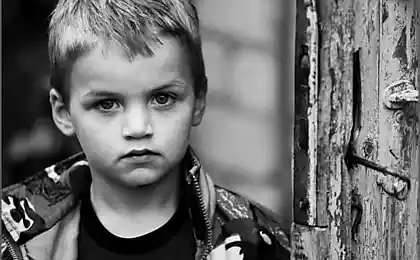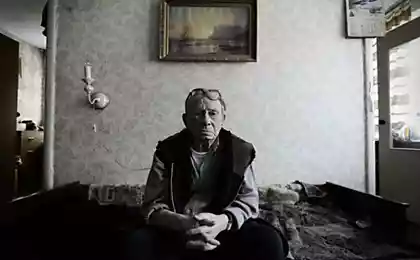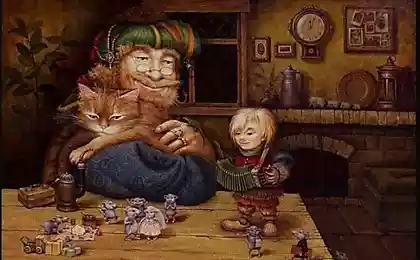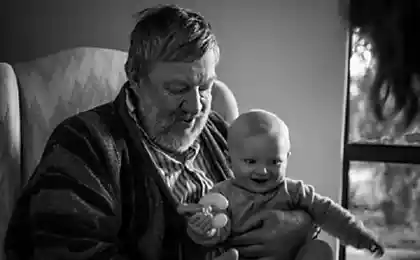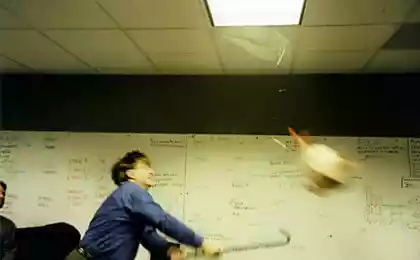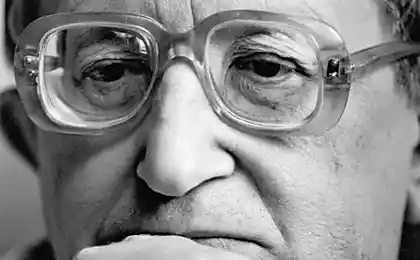559
Grandpa per billion
On Sunday, November 3, the world was shocked with the news about that in an apartment in the unremarkable building in Munich found about 1,500 paintings of a number of famous artists - from Picasso to Dürer.
In the German magazine Focus published an article, blew up the European and American press. The publication commented on almost all mainstream media.
This story, for which just asks the name "Grandpa per billion", probably form the basis of the screenplay. Bright plot, Hollywood scale and a huge impact in the future because of the litigation - all this doom on the commercial success of the film.
So in September 2010, during a routine customs inspection of passenger train en route from Switzerland to Munich, officials drew attention to a 80-year-old grandfather. After inspecting the grandfather found an envelope with 9,000 euros in cash.
With only 1,000 euros more than the amount that must be declared. In general, grandfather bit punctured.
Corrosive German officials from his grandfather not far behind, on the contrary - they took it on the turnover for the full program.
Billionaire ghost
So, when his grandfather began to shake, it turned out that this is a unique grandfather. Firstly, a German tax on grandfather no information. Second, my grandfather lived to old age, but had no legitimate sources of income. Thirdly, my grandfather did not even have health insurance. Fourth, about it knew nothing of the social services. In fact, the semi-official Matrix grandfather did not exist. What incredibly upset and puzzled investigators.
He began to turn on and decided to conduct a search in the apartment in order to identify undeclared money. In a modest, rented for 650 euros a month apartment in the northern part of Munich fiscals raided. Among cans of canned 1980s. and other belongings to the great surprise was discovered a unique art collection, which numbered about 1,500.
These were mostly paintings of the late 19th - the first third of the 20th century. Including by Edgar Degas, Auguste Renoir, Henri Matisse, Pablo Picasso, Marc Chagall, Edvard Munch, Otto Dix, Max Beckmann, Franz Marc and others.
The inspectors were in such shock that his grandfather away from sin was placed in jail, and found information on the collection, which was confiscated and sent to the warehouse customs coded to determine the extent of the disaster.
Gradually a ball began to spin. Firstly, the estimated value of art works found is about 1 billion euros
Recall, the exhibition organized by the decree of Adolf Hitler to educate the public on the subject of what art is right, and which - "degenerate" and "Bolshevik." Swatches "incorrect art" were confiscated from various German museums and private collections. These paintings were considered lost, so their discovery to the world of art is a real treat.
Nature found a collection of mysterious personality grandfather explained.
His name - Cornelius Gurlitt. By itself, it does neprimechatelen. But his dad - Hildebrand Gurlitt - a very interesting personality.
Hildebrand Gurlitt and his tayna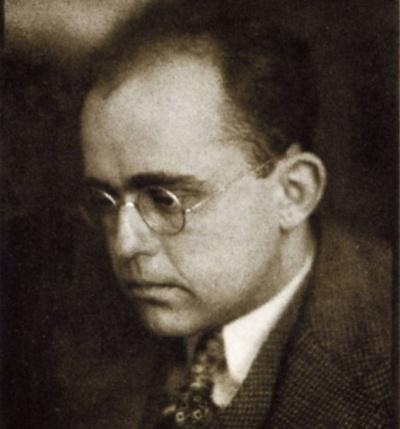
Hildebrand Gurlitt - sign German art dealer and critic.
Gurlitt that dad's grandfather, from 1925 to 1930. He served as director of the museum in Zwickau. In particular, he organized exhibitions of modern artists. For which he was dismissed under pressure from the public and the press, who did not like the obscure Exercise.
Hildebrand Gurlitt moved to Hanover, where he was dealing. Then, he was appointed director of the Kunstverein in Hanover. But again dismissed because his grandmother was Jewish.
Soon, however, his knowledge and skills were in demand Reich. Gurlitt as an experienced art dealer joined the group, which sells confiscated from museums and private collections of objects "degenerate art" abroad. Reich needed currency. In addition to that, he worked as a dealer for the Führer Museum in Linz.
How to describe its activities historians, Hildebrand Gurlitt in 1936 he led a large-scale operation under the auspices of Joseph Goebbels to the Commission on the use of degenerate art. However, since the work was sufficiently sensitive and opaque, it has not informed the authorities about all their transactions. And hide their true scope. As a result, he managed to form a specified collection.
Despite the tight job in the interests of the Reich in 1945, Hildebrand Gurlitt, said the US military that he was interrogated, a victim of Nazi persecution. In addition, he said, he helped many Jews, assisting in the sale of works of art.
With regard to the collection, Gurlitt said that all of it was lost in 1945 during the bombing of Dresden.
After the war, he is still engaged in trafficking in works of art. In 1956, at age 61, Hildebrand Gurlitt died in a car crash.
What next?
But beyond the fun.
Currently, investigators are trying to figure out the origin of the paintings. It is not easy, because the entire family, from whom the Nazis confiscated them, were killed during the war. It is not always preserved documents that can confirm the right of possible heirs to the confiscated works of art.
In any case, the collection will generate a lot of lawsuits. And because of its size and because of the circle of persons who may be affected by it.
For example, at least one painting by Matisse found in Munich, according to experts, belonged to the French art dealer Paul Rosenberg. His granddaughter, a French journalist Anne Sinclair, seeking the return of the paintings confiscated from her grandfather.
However, the paintings will certainly be recognized as the property of Cornelius Gurlitt. Given his advanced age, it is not clear how it will go with them. All these years, Herr Cornelius lived from time to time by selling paintings collected by his father. Just a month before the confiscation of the collection he sold for 864 thousand. Euros at auction in Cologne Lemperttsa picture of Max Beckmann's "lion tamer».

Max Beckmann. "Lion tamer» em>
While there is no answer to the question whether the apartment, where they found the paintings, the only such repository? Or is there more?
In addition, we can expect the market recovery fakes. Using the precedent in 1500 with the discovery of objects that were 70 years in hiding, traders fakes certainly try to legalize their "creations" have been found in other "caches».
While there is no comprehensive information on what works confiscated by officials. But in any case, interest in the subject has increased too.
Alex Kopytko
According to the materials: prostir.museum
via prostir.museum/
In the German magazine Focus published an article, blew up the European and American press. The publication commented on almost all mainstream media.
This story, for which just asks the name "Grandpa per billion", probably form the basis of the screenplay. Bright plot, Hollywood scale and a huge impact in the future because of the litigation - all this doom on the commercial success of the film.
So in September 2010, during a routine customs inspection of passenger train en route from Switzerland to Munich, officials drew attention to a 80-year-old grandfather. After inspecting the grandfather found an envelope with 9,000 euros in cash.
With only 1,000 euros more than the amount that must be declared. In general, grandfather bit punctured.
Corrosive German officials from his grandfather not far behind, on the contrary - they took it on the turnover for the full program.
Billionaire ghost
So, when his grandfather began to shake, it turned out that this is a unique grandfather. Firstly, a German tax on grandfather no information. Second, my grandfather lived to old age, but had no legitimate sources of income. Thirdly, my grandfather did not even have health insurance. Fourth, about it knew nothing of the social services. In fact, the semi-official Matrix grandfather did not exist. What incredibly upset and puzzled investigators.
He began to turn on and decided to conduct a search in the apartment in order to identify undeclared money. In a modest, rented for 650 euros a month apartment in the northern part of Munich fiscals raided. Among cans of canned 1980s. and other belongings to the great surprise was discovered a unique art collection, which numbered about 1,500.
These were mostly paintings of the late 19th - the first third of the 20th century. Including by Edgar Degas, Auguste Renoir, Henri Matisse, Pablo Picasso, Marc Chagall, Edvard Munch, Otto Dix, Max Beckmann, Franz Marc and others.
The inspectors were in such shock that his grandfather away from sin was placed in jail, and found information on the collection, which was confiscated and sent to the warehouse customs coded to determine the extent of the disaster.
Gradually a ball began to spin. Firstly, the estimated value of art works found is about 1 billion euros
Recall, the exhibition organized by the decree of Adolf Hitler to educate the public on the subject of what art is right, and which - "degenerate" and "Bolshevik." Swatches "incorrect art" were confiscated from various German museums and private collections. These paintings were considered lost, so their discovery to the world of art is a real treat.
Nature found a collection of mysterious personality grandfather explained.
His name - Cornelius Gurlitt. By itself, it does neprimechatelen. But his dad - Hildebrand Gurlitt - a very interesting personality.
Hildebrand Gurlitt and his tayna

Hildebrand Gurlitt - sign German art dealer and critic.
Gurlitt that dad's grandfather, from 1925 to 1930. He served as director of the museum in Zwickau. In particular, he organized exhibitions of modern artists. For which he was dismissed under pressure from the public and the press, who did not like the obscure Exercise.
Hildebrand Gurlitt moved to Hanover, where he was dealing. Then, he was appointed director of the Kunstverein in Hanover. But again dismissed because his grandmother was Jewish.
Soon, however, his knowledge and skills were in demand Reich. Gurlitt as an experienced art dealer joined the group, which sells confiscated from museums and private collections of objects "degenerate art" abroad. Reich needed currency. In addition to that, he worked as a dealer for the Führer Museum in Linz.
How to describe its activities historians, Hildebrand Gurlitt in 1936 he led a large-scale operation under the auspices of Joseph Goebbels to the Commission on the use of degenerate art. However, since the work was sufficiently sensitive and opaque, it has not informed the authorities about all their transactions. And hide their true scope. As a result, he managed to form a specified collection.
Despite the tight job in the interests of the Reich in 1945, Hildebrand Gurlitt, said the US military that he was interrogated, a victim of Nazi persecution. In addition, he said, he helped many Jews, assisting in the sale of works of art.
With regard to the collection, Gurlitt said that all of it was lost in 1945 during the bombing of Dresden.
After the war, he is still engaged in trafficking in works of art. In 1956, at age 61, Hildebrand Gurlitt died in a car crash.
What next?
But beyond the fun.
Currently, investigators are trying to figure out the origin of the paintings. It is not easy, because the entire family, from whom the Nazis confiscated them, were killed during the war. It is not always preserved documents that can confirm the right of possible heirs to the confiscated works of art.
In any case, the collection will generate a lot of lawsuits. And because of its size and because of the circle of persons who may be affected by it.
For example, at least one painting by Matisse found in Munich, according to experts, belonged to the French art dealer Paul Rosenberg. His granddaughter, a French journalist Anne Sinclair, seeking the return of the paintings confiscated from her grandfather.
However, the paintings will certainly be recognized as the property of Cornelius Gurlitt. Given his advanced age, it is not clear how it will go with them. All these years, Herr Cornelius lived from time to time by selling paintings collected by his father. Just a month before the confiscation of the collection he sold for 864 thousand. Euros at auction in Cologne Lemperttsa picture of Max Beckmann's "lion tamer».

Max Beckmann. "Lion tamer» em>
While there is no answer to the question whether the apartment, where they found the paintings, the only such repository? Or is there more?
In addition, we can expect the market recovery fakes. Using the precedent in 1500 with the discovery of objects that were 70 years in hiding, traders fakes certainly try to legalize their "creations" have been found in other "caches».
While there is no comprehensive information on what works confiscated by officials. But in any case, interest in the subject has increased too.
Alex Kopytko
According to the materials: prostir.museum
via prostir.museum/






